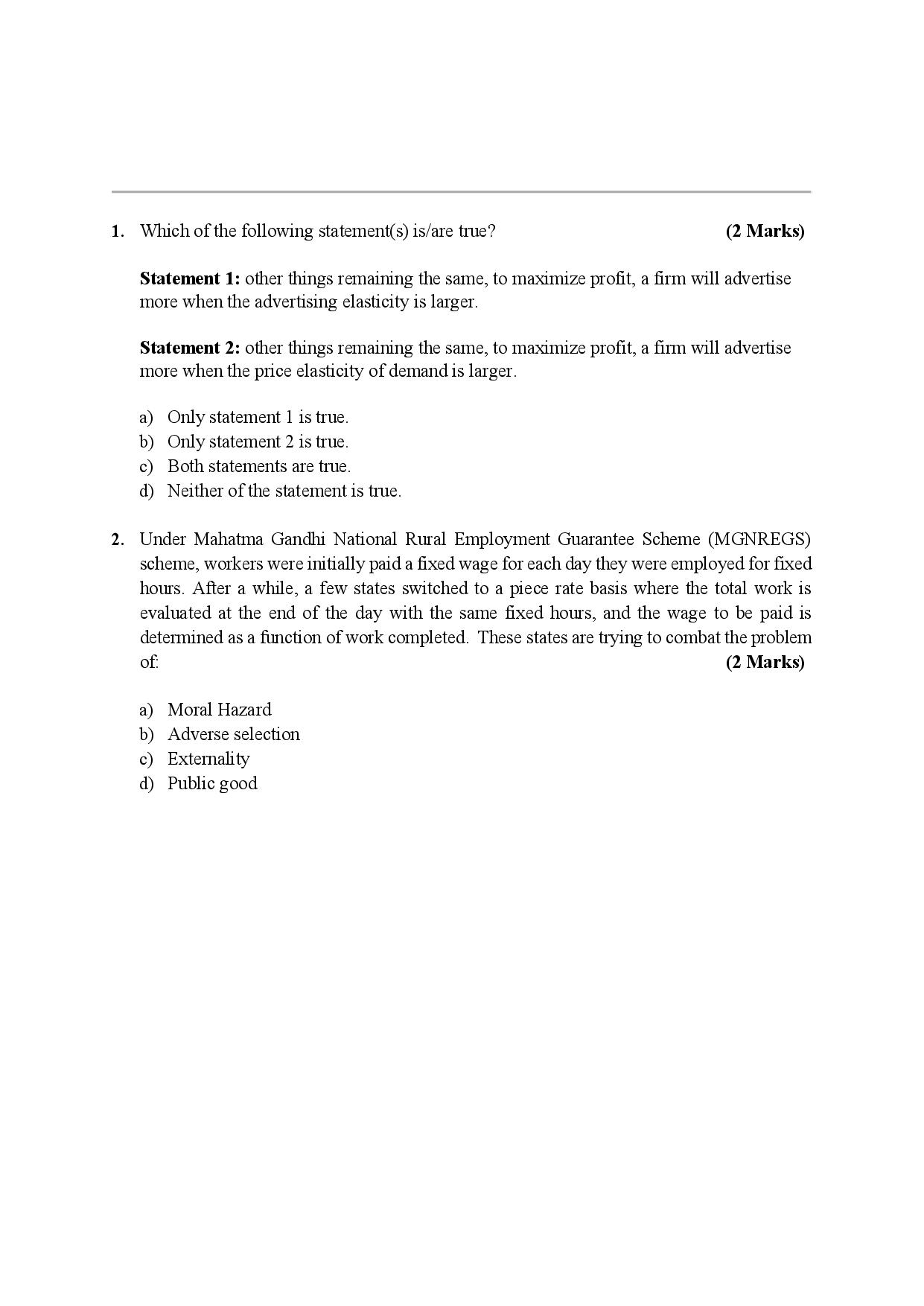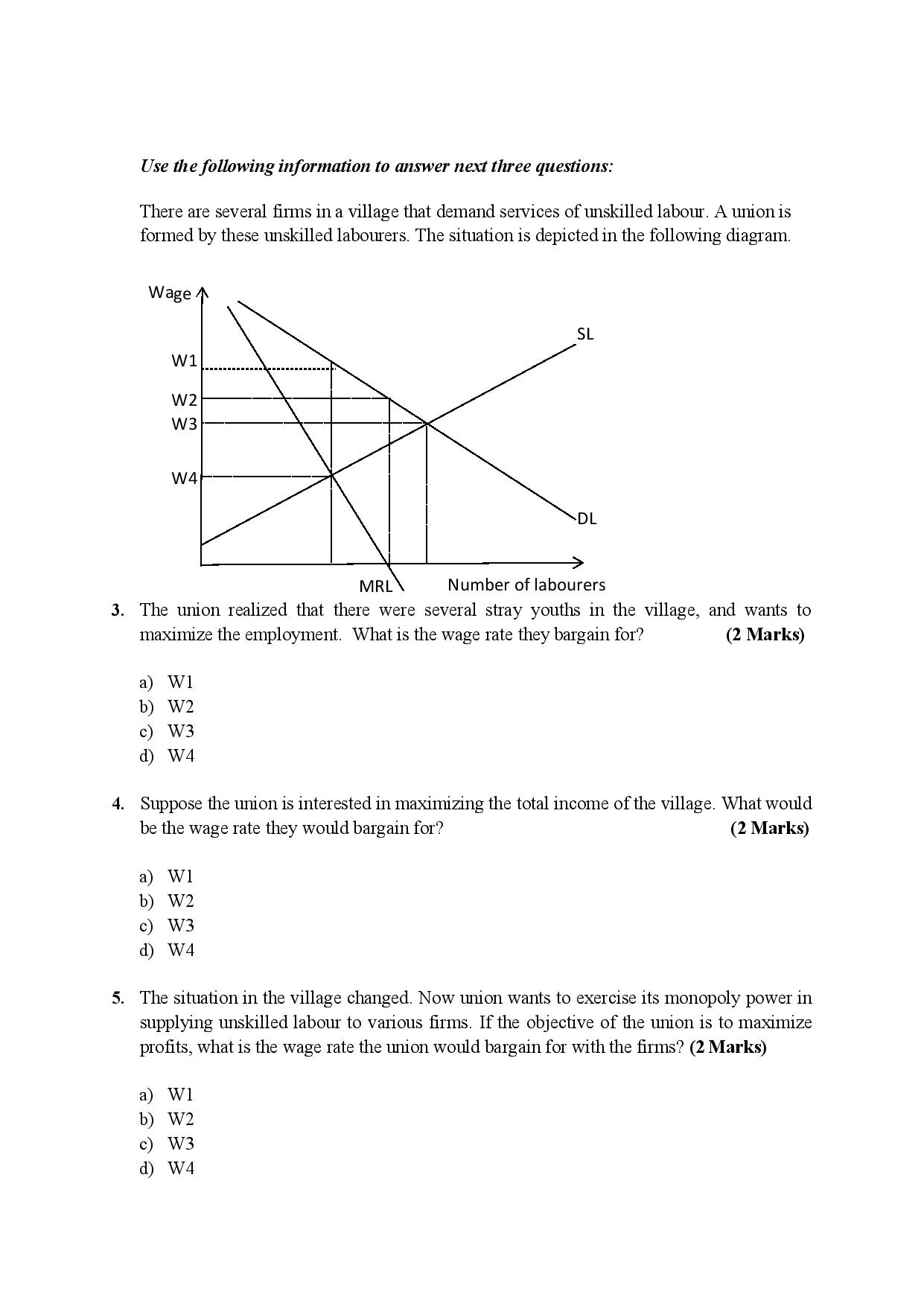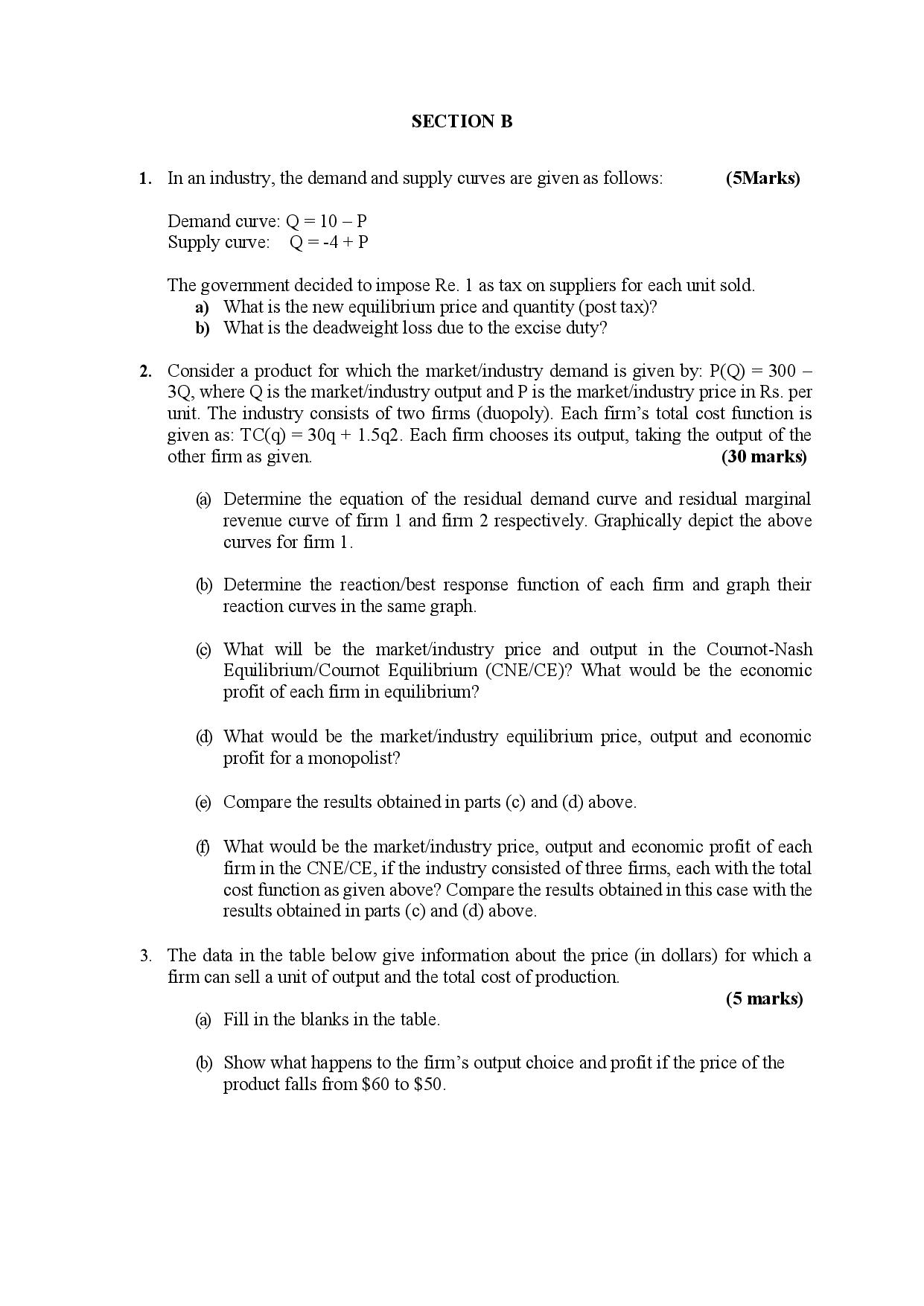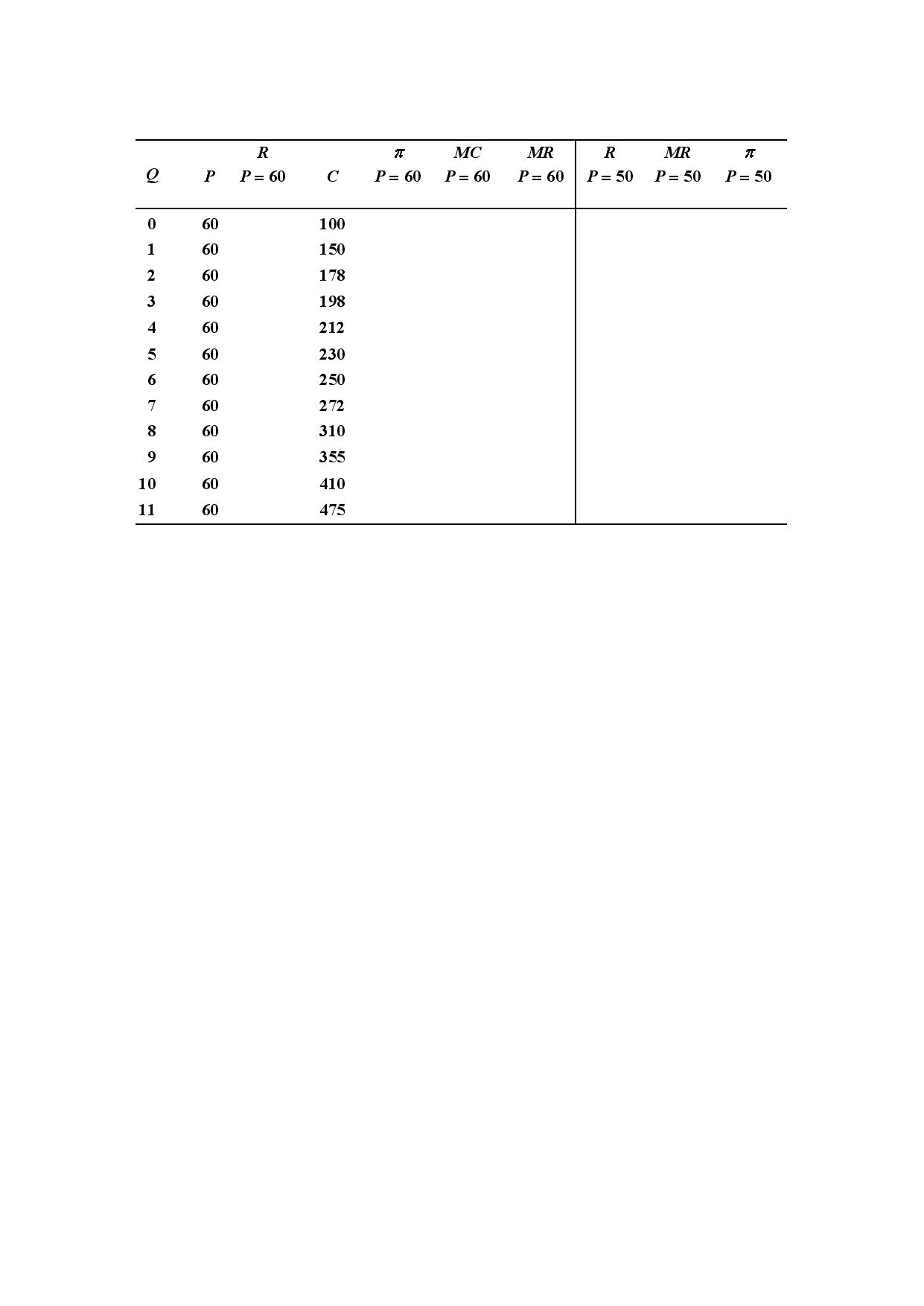Question
1. Which of the following statement(s) is/are true? (2 Marks) Statement 1: other things remaining the same, to maximize profit, a firm will advertise more
1.Which of the following statement(s) is/are true? (2 Marks)
Statement 1: other things remaining the same, to maximize profit, a firm will advertise more when the advertising elasticity is larger.
Statement 2: other things remaining the same, to maximize profit, a firm will advertise more when the price elasticity of demand is larger.
a)Only statement 1 is true.
b)Only statement 2 is true.
c)Both statements are true.
d)Neither of the statement is true.
2.Under Mahatma Gandhi National Rural Employment Guarantee Scheme (MGNREGS) scheme, workers were initially paid a fixed wage for each day they were employed for fixed hours. After a while, a few states switched to a piece rate basis where the total work is evaluated at the end of the day with the same fixed hours, and the wage to be paid is determined as a function of work completed. These states are trying to combat the problem of: (2 Marks)
a)Moral Hazard
b)Adverse selection
c)Externality
d)Public good
Use the following information to answer next three questions:
There are several firms in a village that demand services of unskilled labour. A union is formed by these unskilled labourers. The situation is depicted in the following diagram.
3.The union realized that there were several stray youths in the village, and wants to maximize the employment.What is the wage rate they bargain for? (2 Marks)
a)W1
b)W2
c)W3
d)W4
4.Suppose the union is interested in maximizing the total income of the village. What would be the wage rate they would bargain for? (2 Marks)
a)W1
b)W2
c)W3
d)W4
5.The situation in the village changed. Now union wants to exercise its monopoly power in supplying unskilled labour to various firms. If the objective of the union is to maximize profits, what is the wage rate the union would bargain for with the firms? (2 Marks)
a)W1
b)W2
c)W3
d)W4
SECTION B
1.In an industry, the demand and supply curves are given as follows: (5Marks)
Demand curve: Q = 10 - P Supply curve:Q = -4 + P
The government decided to impose Re. 1 as tax on suppliers for each unit sold.
a)What is the new equilibrium price and quantity (post tax)?
b)What is the deadweight loss due to the excise duty?
2.Consider a product for which the market/industry demand is given by: P(Q) = 300 - 3Q, where Q is the market/industry output and P is the market/industry price in Rs. per unit. The industry consists of two firms (duopoly). Each firm's total cost function is given as: TC(q) = 30q + 1.5q2. Each firm chooses its output, taking the output of the other firm as given. (30 marks)
(a)Determine the equation of the residual demand curve and residual marginal revenue curve of firm 1 and firm 2 respectively. Graphically depict the above curves for firm 1.
(b)Determine the reaction/best response function of each firm and graph their reaction curves in the same graph.
(c)What will be the market/industry price and output in the Cournot-Nash Equilibrium/Cournot Equilibrium (CNE/CE)? What would be the economic profit of each firm in equilibrium?
(d)What would be the market/industry equilibrium price, output and economic profit for a monopolist?
(e)Compare the results obtained in parts (c) and (d) above.
(f)What would be the market/industry price, output and economic profit of each firm in the CNE/CE, if the industry consisted of three firms, each with the total cost function as given above? Compare the results obtained in this case with the results obtained in parts (c) and (d) above.
2020-page-004.jpg" />2020-page-003.jpg" />2020-page-002.jpg" />2020-page-001.jpg" />




Step by Step Solution
There are 3 Steps involved in it
Step: 1

Get Instant Access to Expert-Tailored Solutions
See step-by-step solutions with expert insights and AI powered tools for academic success
Step: 2

Step: 3

Ace Your Homework with AI
Get the answers you need in no time with our AI-driven, step-by-step assistance
Get Started


